-
List of schools in York
Education | Young People
This dataset contains details of all currently open Nursery, Primary, Secondary and Special Schools in York For more information on schools and contact details in York,...
-
School Ofsted Rating - Overall: Inadequate -%
Education | Young People
School Ofsted Rating - Overall: Inadequate -% *This indicator has been discontinued
-
School Ofsted Rating - Overall: Inadequate - numbers
Education | Young People
School Ofsted Rating - Overall: Inadequate - numbers *This indicator has been discontinued
-
School Ofsted Rating - Overall: Requires improvement -%
Education | Young People
School Ofsted Rating - Overall: Requires improvement -% *This indicator has been discontinued
-
School Ofsted Rating - Overall: Requires improvement - numbers
Education | Young People
School Ofsted Rating - Overall: Requires improvement - numbers *This indicator has been discontinued
-
School Ofsted Rating - Overall: Good -%
Education | Young People
School Ofsted Rating - Overall: Good -% *This indicator has been discontinued
-
School Ofsted Rating - Overall: Good - numbers
Education | Young People
School Ofsted Rating - Overall: Good - numbers *This indicator has been discontinued
-
School Ofsted Rating - Overall: Outstanding -%
Education | Young People
School Ofsted Rating - Overall: Outstanding -% *This indicator has been discontinued
-
School Ofsted Rating - Overall: Outstanding - numbers
Education | Young People
School Ofsted Rating - Overall: Outstanding - numbers *This indicator has been discontinued
-
School Ofsted Rating - Secondary: Inadequate -%
Education | Young People
School Ofsted Rating - Secondary: Inadequate -% *This indicator has been discontinued
-
School Ofsted Rating - Secondary: Inadequate - numbers
Education | Young People
School Ofsted Rating - Secondary: Inadequate - numbers *This indicator has been discontinued
-
School Ofsted Rating - Secondary: Requires improvement -%
Education | Young People
School Ofsted Rating - Secondary: Requires improvement -% *This indicator has been discontinued
-
School Ofsted Rating - Secondary: Requires improvement - numbers
Education | Young People
School Ofsted Rating - Secondary: Requires improvement - numbers *This indicator has been discontinued
-
School Ofsted Rating - Secondary: Good -%
Education | Young People
School Ofsted Rating - Secondary: Good -% *This indicator has been discontinued
-
School Ofsted Rating - Secondary: Outstanding -%
Education | Young People
School Ofsted Rating - Secondary: Outstanding -% *This indicator has been discontinued
-
School Ofsted Rating - Secondary: Good - numbers
Education | Young People
School Ofsted Rating - Secondary: Good - numbers *This indicator has been discontinued
-
School Ofsted Rating - Secondary: Outstanding - numbers
Education | Young People
School Ofsted Rating - Secondary: Outstanding - numbers *This indicator has been discontinued
-
School Ofsted Rating - Primary: Inadequate -%
Education | Young People
School Ofsted Rating - Primary: Inadequate -% *This indicator has been discontinued
-
School Ofsted Rating - Primary: Inadequate - numbers
Education | Young People
School Ofsted Rating - Primary: Inadequate - numbers *This indicator has been discontinued
-
School Ofsted Rating - Primary: Requires improvement -%
Education | Young People
School Ofsted Rating - Primary: Requires improvement -% *This indicator has been discontinued
-
School Ofsted Rating - Primary: Requires improvement - numbers
Education | Young People
School Ofsted Rating - Primary: Requires improvement - numbers *This indicator has been discontinued
-
School Ofsted Rating - Primary: Good - numbers
Education | Young People
School Ofsted Rating - Primary: Good - numbers *This indicator has been discontinued
-
School Ofsted Rating - Primary: Outstanding -%
Education | Young People
School Ofsted Rating - Primary: Outstanding -% *This indicator has been discontinued
-
School Ofsted Rating - Primary: Outstanding - numbers
Education | Young People
School Ofsted Rating - Primary: Outstanding - numbers *This indicator has been discontinued
-
% of 1st preferences secured for York children in the Secondary school...
Education | Young People
% of 1st preferences secured for York children in the Secondary school admission round (relates to academic year after financial year shown) - (Snapshot)
There are no Tags that match this search


